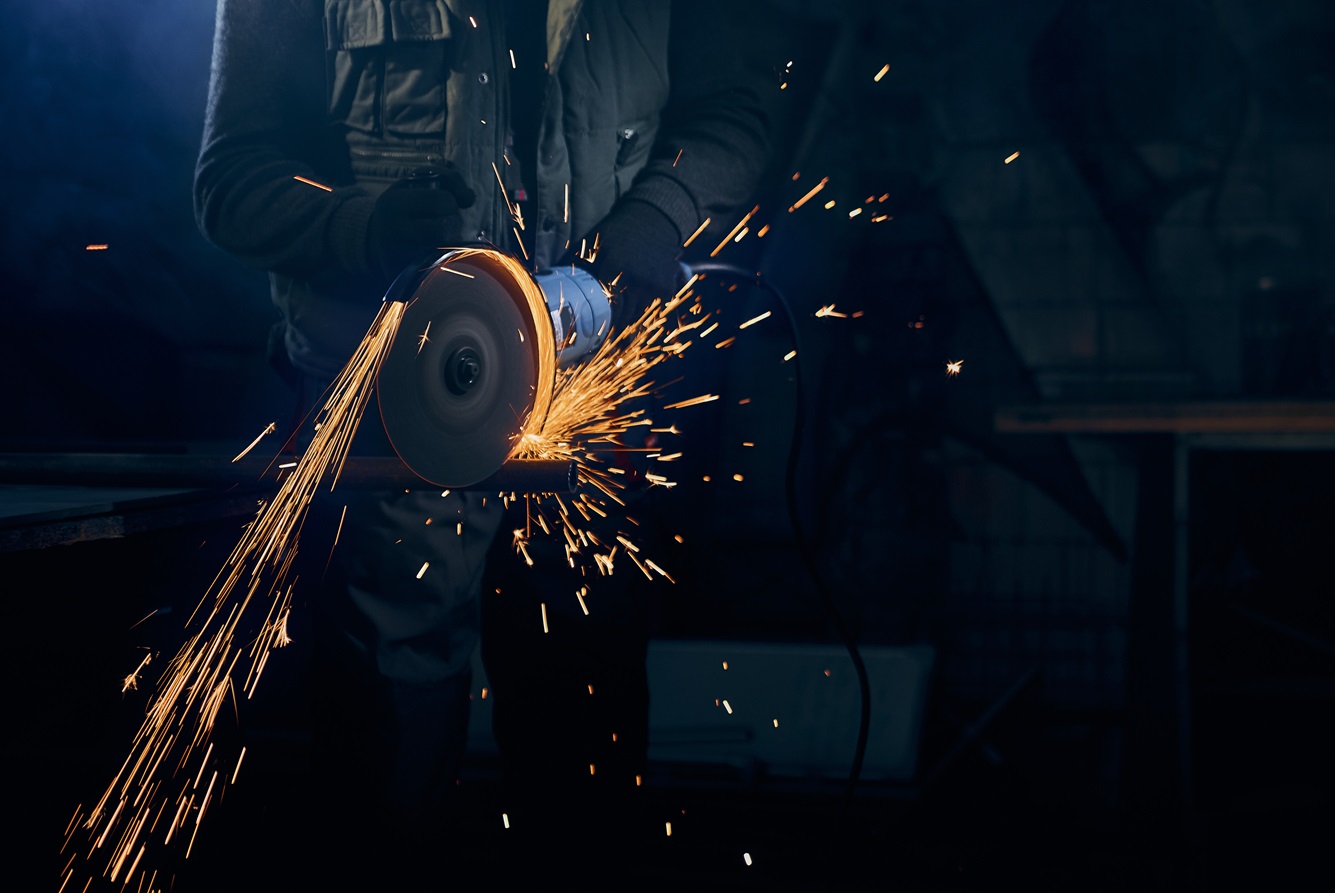

The metal industry is vast, owing to the different applications of metal. In manufacturing, construction, automotive industries, etc., where metal is vastly used, metal shearing is found to be indispensable. Various techniques are used to cut metal into its desired shapes; thus, a metal service provider must know which methods to use and when.
In this blog, you will learn about metal shearing and other cutting methods, the difference between the techniques used, and which is right for you.
Metal shearing is the method of cutting metal sheets using a sharp blade. These blades can be manually driven, hydraulic-powered, electrically powered, or CNC-enabled. The idea behind metal shearing is to use sheer force to drop the blade on the metal to cut it into pieces cleanly and quickly without producing heat and sparks. This method is used for cutting all metal types, including hard metals such as iron and carbon steel and softer metals as well, such as aluminum and stainless steel.
Metal shearing is known for its simplicity, versatility, speed, and precise shearing.
Here are the different advantages of this method:
Speed: Metal shearing is quick, especially when straighter cuts are involved. In high-volume production settings, it comes in handy. Today, metal cutting shears are supported by CNC technology, making it faster to achieve complex shapes with considerable ease.
Cost-Efficiency: No complex setups are required for metal shearing. A simple manual metal shear will also work for small workshops and DIY projects. The process is pretty simple and doesn’t require any high-end machine or exclusively trained workforce. Also, it does not produce any metal waste, making it a very cost-effective method.
Safety: Metal shearing is a safe process, as it is simple, and it does not produce heat or excessive noise which might lead to several health issues among the workforce.
Precise Cuts: Metal shearing is known for its high-quality, straighter, and cleaner cuts.
Versatile: Metal shearing is not for selected metals, but it is versatile and can be used for almost all metals.
Here are the disadvantages of metal shearing:
Jagged Edges: The effectiveness of metal shearing depends upon the sharpness of the blades. If the metal service provider doesn’t proactively check and change the blades in time, the blunt blades deform the metal.
Not Suitable for Hard Metals: Metal shearing is versatile, but it is not suitable at all when it comes to extremely hard metals such as tungsten.
Limited Operations: Shearing is mostly limited to straighter cuts. In short, it is best suited for cutting large sheets into smaller pieces, but if the workpieces are too small, metal shearing is not the solution.
Due to the limited operations of metal shearing and the advancement of technologies, other cutting methods are considered at par with metal shearing, and you should have a look at them to decide which one is optimum for your operations:
Laser cutting is making headlines due to its ability to cut all metal types, regardless of thickness or hardness. This method uses a high-powered laser beam to shear the metal without deforming it. Based on the underlying metal type, the power of the laser can be adjusted.
Its precision is unmatchable, and there is no risk of deformed or jagged edges.
However, it is considered an expensive method compared to metal shearing, as the initial investment is quite high. Also, it is a cost-effective method when used in high-volume production areas. It is not a suitable cutting method for smaller workshops and DIY operations.
Plasma cutting is not a very common cutting method especially when compared to metal shearing. This technique uses a jet of ionized gas to cut through the metal. The temperature of the jet is very high that melts the metal and cuts it.
For thicker metals, where sheet shearing machines are not effective and laser cutting is way too expensive, plasma cutting is a great option. Also, it is quite fast and cuts through every metal despite its thickness.
On the other hand, it generates heat, which is absent in both laser cutting and shearing.
Also, the cuts aren’t as straight as the shearing.
Waterjet cutting is literally cutting the metal with water. The water has abrasive elements and it is applied on the metal with extreme pressure, so much that it cuts the metal. The relative ease with which it achieves high-quality cuts is mind-blowing, and the best thing is that it doesn’t produce heat.
It is precise and fast, but the only downside is its high cost, which doesn’t make it suitable for smaller jobs.
This decision is based on several factors, which are discussed here:
Budget: Whether you are investing in the machine itself or want to get a smaller shearing job done, you should set a budget and decide which method will suit your needs best. If you are a hobbyist, then it is advised that you invest in smaller shearing machines and use an expert metal fabricator for the rest of the cutting techniques, if needed for a specific operation.
Material Thickness: If the material you need sheared is thick and your shear is unsuitable, hire an expert and choose your preferred metal-cutting method. Ask questions and learn about the cost of shearing before making the decision.
Production Speed: For industrial needs where the job is huge, laser cutting is advised, as it will be a cost-effective method for such a large operation and offer precise cuts.
So, carefully consider all the relevant factors before choosing a metal shearing or cutting method.
Metal shearing and other cutting methods offer their unique advantages and disadvantages. There is no right or wrong method, depending on your needs and budget.
Read the blog again and contact New Mexico Metals LLC for any queries.
We are the best metal service provider in Albuquerque thanks to our advanced machines and a trained workforce allowing us to offer the best services in the area.
Call us or visit us anytime for any metal needs.